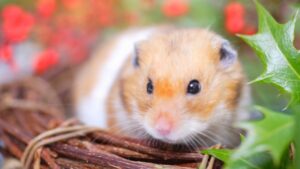
Can You Travel with a Hamster? A Comprehensive Guide
Traveling with a pet hamster isn’t as straightforward as it might seem. It requires careful consideration of your pet’s safety, comfort, and the logistics involved.

Hamsters, delicate creatures, are often susceptible to various health issues. Pet owners need to be vigilant about any signs of illness. A frequent question among hamster owners concerns the noticeable size of their pet’s testicles.
So, why do hamsters have such large testicles? This is a normal aspect of their development, and usually, there’s no cause for concern. Hamsters reach sexual maturity quickly and naturally have larger testicles compared to their body size.
However, it’s crucial to note that sometimes an unusually large size can be a sign of a problem. We’ll delve deeper into this aspect of hamster health in the following sections.
Hamsters are part of the rodent family, and a characteristic trait of these animals is their large testicles. As noted previously, hamster testicles can grow to be about one-fourth the size of their body.

This means that larger varieties of hamsters, like the Syrian hamsters, usually have bigger testicles compared to their smaller relatives.
They might also appear bigger at certain times. Like right after they wake up from a nap, or during hot, humid weather.
Here’s why your hamster’s testicle size, though noticeably large, isn’t a concern.
Weather effects on your hamster
Hamsters often fail to keep their testicles hidden, especially in the summer when it’s hot and humid. This behavior is related to the scrotum’s role in protecting the sperm.
In the summer, a hamster’s body heat rises. If the testicles get too hot, the sperm could die, and the testicles could be damaged. To prevent this, the scrotum loosens its muscles, allowing the testicles to hang lower away from the body, which helps cool down the sperm and the testicles.
In contrast, during winter, we often observe the opposite. The testicles contract and become less visible. This change is a response to the colder temperature of the scrotum. The scrotum contracts its muscles to pull the testicles closer to the body, allowing them to absorb body heat and stay warm.
Hamster growth in the first 3 months
Hamsters usually reach sexual maturity within the first 3 months after birth. Depending on the breed, this can happen a bit earlier or later, a result of their survival instincts.
In the wild, hamsters are near the bottom of the food chain. To avoid extinction, they start reproducing early in life. More offspring means a better chance for the species to survive.
This early and significant growth of their testicles is a part of this survival strategy. If your hamster is under 3 months old, a noticeable increase in testicle size is natural and not a cause for worry.
During this phase, your hamster isn’t just maturing sexually; they’re also producing a large amount of sperm, readying for high-frequency reproduction.
When your hamster gets frisky

Usually, hamsters are quite adept at hiding their testicles beneath their fur, making them almost invisible most of the time. However, they reveal them on certain occasions, particularly when they are in a sexually active state.
In the wild, during mating seasons, a common behavior among male animals is to attract females and compete with other males for mating opportunities.
Each species has its unique way of attracting a mate. Peacocks display their colorful feathers, lions use their roars and growls, and hamsters, interestingly, make their testicles visible.
This display by hamsters serves as a signal to females, indicating their reproductive readiness and attempting to attract attention with the promise of ample sperm for reproduction.
After your hamster’s nap
As noted earlier, hamsters typically keep their testicles concealed under their fur. However, there are times, particularly just after waking up from a nap, when they might not cover them up as usual.

Right after waking up, your hamster might still be a bit groggy and might not immediately remember to cover its testicles. But there’s no need for concern; as it fully wakes up and becomes more alert, it will resume hiding its testicles beneath its fur.
It’s normal for hamsters to have large testicles, and this usually isn’t a cause for concern. However, when does it become a problem? There are several factors to look out for.
Testicular swelling
Identifying swelling in a testicle that is already large can be challenging. As a hamster owner, it’s important to be observant of such changes. If you notice a sudden increase in the size of your hamster’s testicle, especially if it’s accompanied by redness, this could be a sign of swelling. This situation requires immediate veterinary attention.
Video demonstration of testicular swelling in hamsters.
Excessive water consumption
It’s not always a problem when hamsters drink a lot of water. They might simply be very thirsty, especially on hot, humid days, or they could be adjusting to a new diet.
However, excessive water consumption can sometimes indicate a urinary infection or a UTI (Urinary Tract Infection). If your hamster is drinking a lot of water and also shows any of the other symptoms mentioned above, it’s a good idea to consult a veterinarian. It’s always better to be safe than sorry!

Continuous testicle growth post-maturity
As mentioned before, hamsters usually reach full sexual maturity around 3 months of age. By this time, the rapid growth of their testicles should have ceased. If you observe that the testicles continue to grow beyond this point, it could be an indication of an issue.
Redness in the testicles
If you notice redness in your hamster’s scrotum, it’s important to consult a vet immediately. Normally, hamsters should not exhibit redness in their testicles or scrotum.
Significant appetite reduction
A decline in appetite can signify various health issues. However, if your hamster exhibits an unusually large testicle along with a loss of appetite, this could indicate a problem related to the testicle.
Lethargy in your hamster
If your hamster appears lethargic and lacking energy, it’s almost always a concern. In their natural habitat, hamsters are full of life and activity. They possess so much energy that providing a hamster wheel is essential, allowing them to expend this energy and avoid depression.
Thus, if you observe your hamster showing signs of lethargy, it’s wise to watch for other symptoms of illness. In some cases, conditions like urinary infections or bladder tumors can cause significant pain, hindering their ability to move around.
Hamsters are robust animals with strong immune systems, capable of resisting many diseases. However, they are not entirely immune to health issues. There are specific illnesses that hamsters are particularly susceptible to. To identify these diseases:
Illnesses and associated signs
There are several steps you can take to keep your hamster safe, healthy, and happy, even when facing issues with testicular health.

Properly Caring For Your Hamster’s and their home
Preventing testicular problems in hamsters can be achieved by maintaining the hamster cage in a room with a controlled temperature. Make efforts to keep your hamster cooler during the summer and warmer in the winter.
Performing a temperature check
To determine if your hamster might have a testicular tumor, you can perform a temperature test.
For this test, first place your hamster in a warm, humid room, and then move him to a cooler room. If the testicle expands in the warm room but doesn’t shrink significantly in the cool room, it’s advisable to contact a vet. This could be a sign that your hamster has a testicular tumor.
Seek veterinary assistance
It’s crucial to emphasize that if your hamster appears to be in discomfort, the best course of action is to consult a veterinarian.

Hamster owners may have concerns about their pet’s health or behavior, and it’s important to be aware of any changes in your furry friend. If you’re curious about topics like “Which Hamsters Can Live Together?” and “Do Hamsters Hibernate?“, you’ll find valuable insights in our related articles. For those considering giving their hamster snacks, our article on ‘Can A Hamster Eat Apples?‘ offers useful tips for feeding apples safely. Additionally, if you suspect that your hamster may be pregnant, our guide on ‘How To Care For Baby Hamsters: A Beginner’s Guide‘ provides essential information on what steps to take. Visit our website to access more articles and learn how to ensure your hamster’s health and happiness.
In this discussion, we’ve talked about Why Are Hamster Testicles So Big? It turns out that hamsters naturally grow large testicles, and this is completely normal.
However, it’s important to keep an eye on your hamster’s health. If you ever notice anything unusual or concerning, don’t hesitate to consult a vet. The key to keeping your hamster happy and healthy is to pay attention to their well-being and take action when needed. This will ensure that your hamster thrives in your care.
Here we’ve compiled the most frequently asked questions about this topic for more information.
Q: Can changes in temperature affect my hamster’s testicle size?
A: Yes, temperature changes can impact the size of a hamster’s testicles. They tend to enlarge in warmer conditions and shrink in cooler temperatures as a natural response to regulate temperature.
Q: Should I be concerned if one testicle is larger than the other?
A: It’s not uncommon for one testicle to be slightly larger than the other. However, if there’s a significant size difference or if you notice other symptoms like redness or swelling, it’s advisable to consult a vet.
Q: When are my hamsters sexually active?
A: Hamsters generally become sexually active during the spring and summer.
References


Traveling with a pet hamster isn’t as straightforward as it might seem. It requires careful consideration of your pet’s safety, comfort, and the logistics involved.
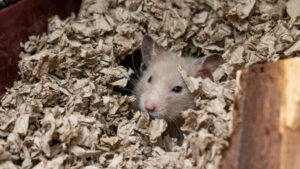
Finding the best hamster cage for Syrian hamster is crucial, as these curious, low-maintenance, and independent pets thrive in the right environment. The primary concern
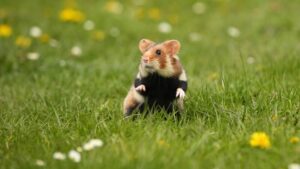
When I began, the task of selecting essentials for a natural hamster habitat was daunting. To ease this process, I’ve assembled an exclusive set of

Have you ever wondered, “Are hamsters happier in bigger cages?” Generally YES. It’s a question that might seem straightforward, but there’s more to it than
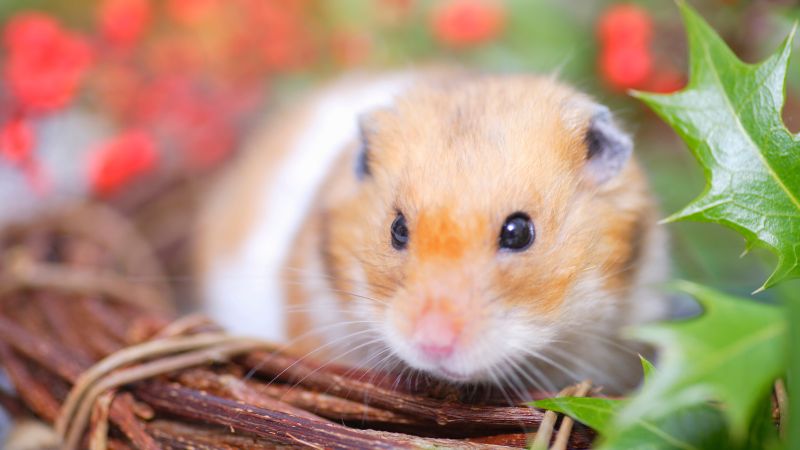
Traveling with a pet hamster isn’t as straightforward as it might seem. It requires careful consideration of your pet’s safety, comfort, and the logistics involved.
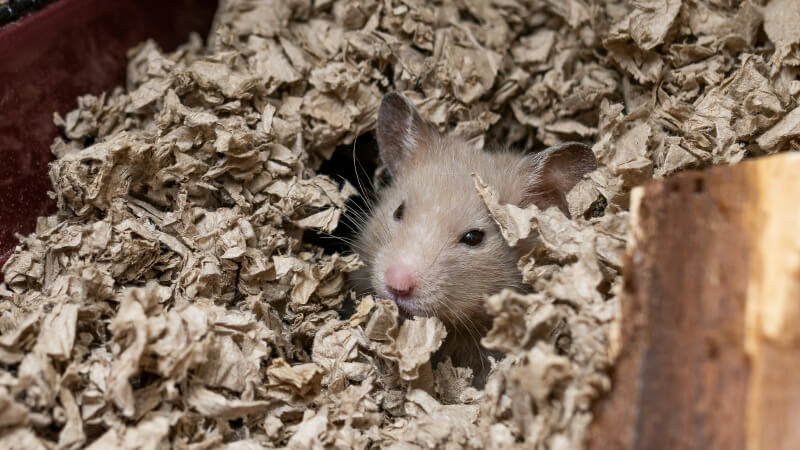
Finding the best hamster cage for Syrian hamster is crucial, as these curious, low-maintenance, and independent pets thrive in the right environment. The primary concern
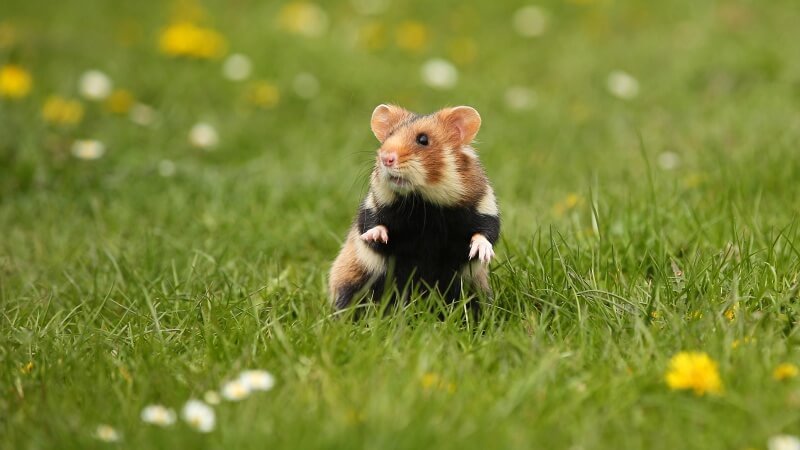
When I began, the task of selecting essentials for a natural hamster habitat was daunting. To ease this process, I’ve assembled an exclusive set of

Have you ever wondered, “Are hamsters happier in bigger cages?” Generally YES. It’s a question that might seem straightforward, but there’s more to it than